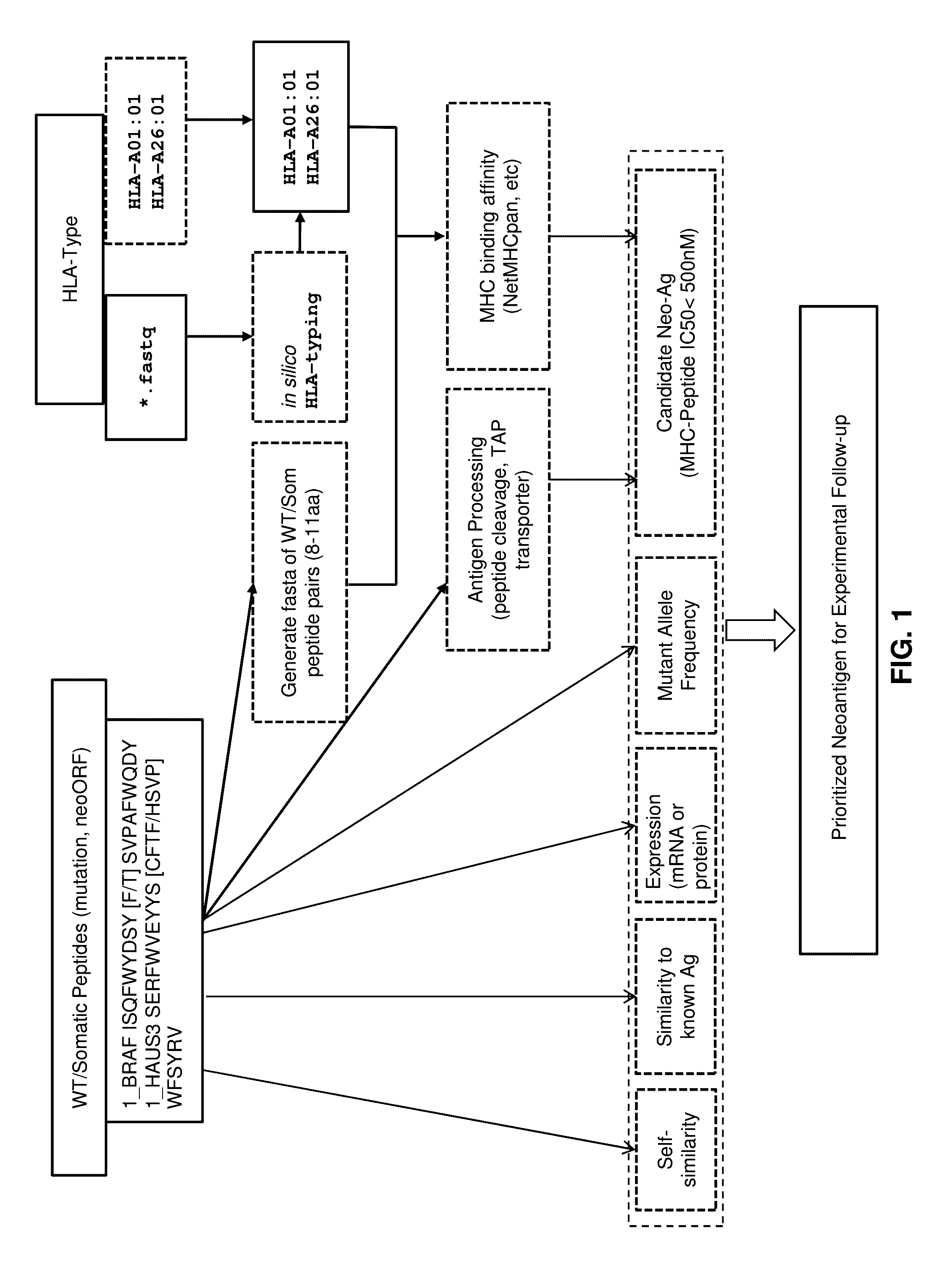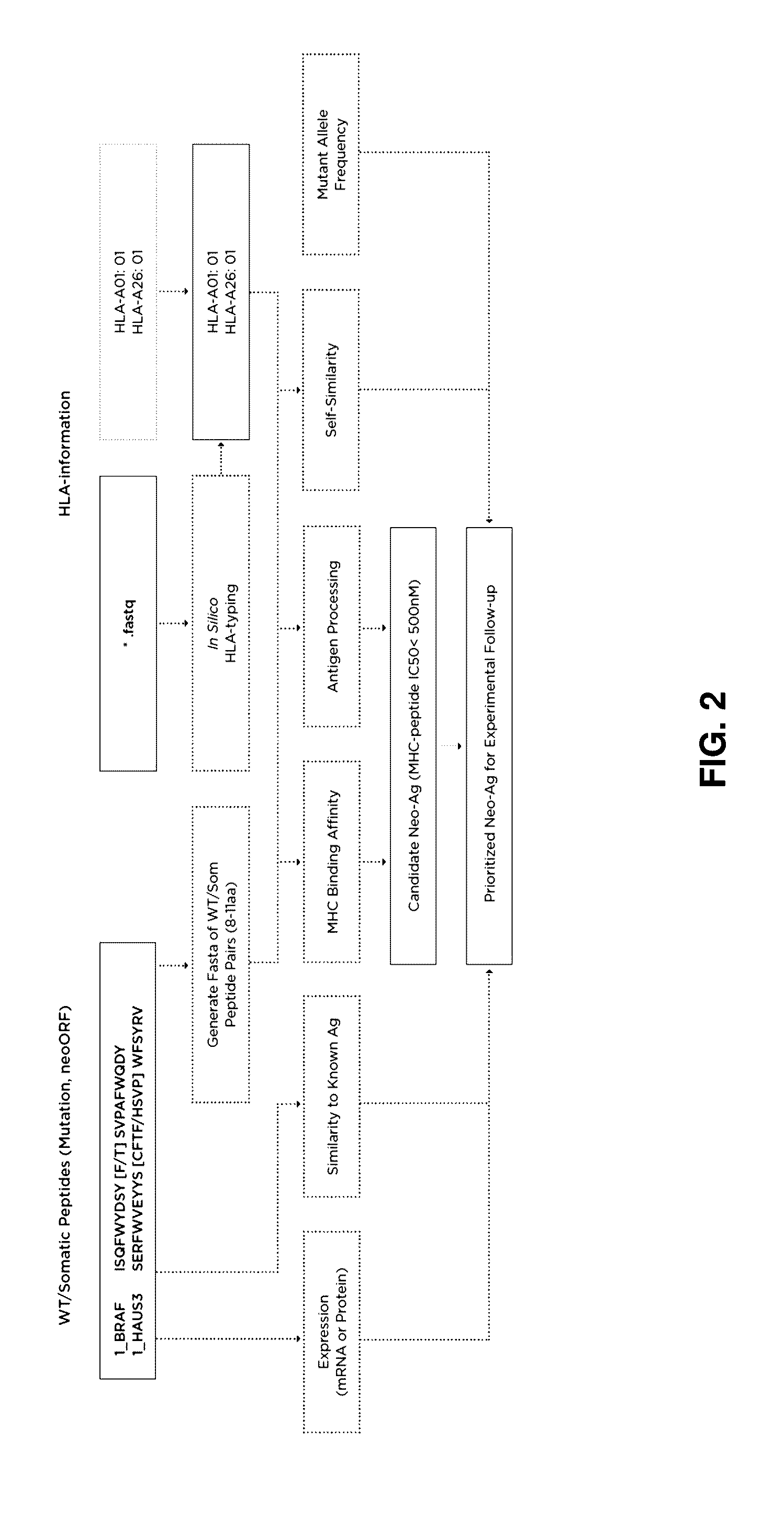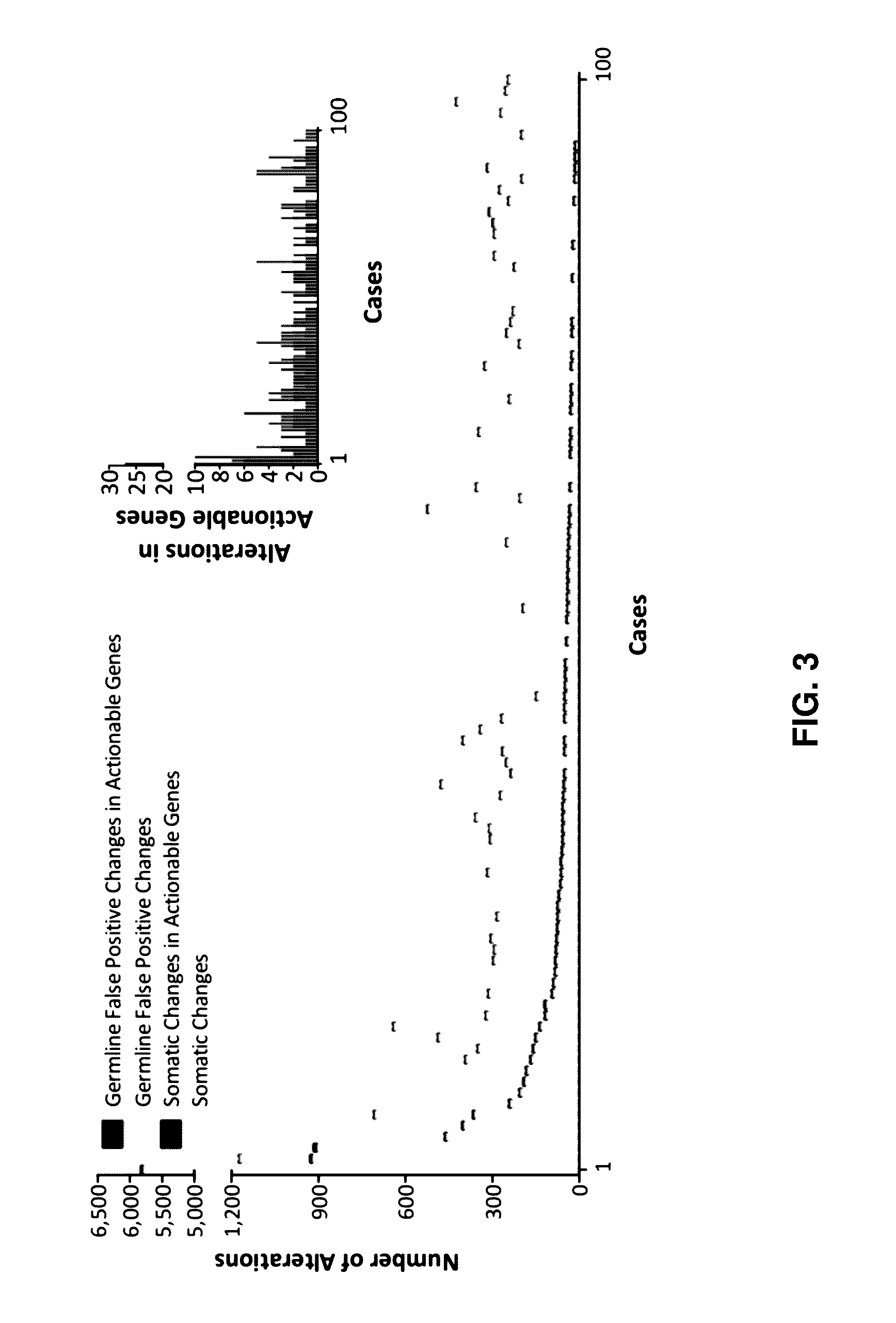Neoantigen analysis
- Summary
- Abstract
- Description
- Claims
- Application Information
AI Technical Summary
Benefits of technology
Problems solved by technology
Method used
Image
Examples
example 1
[0056]In an exemplary embodiment, given a set of candidate neoantigen peptides, which may be determined by their association with somatic mutations determined through sequence analysis, the following set of rules may be applied. MHC binding affinity may be determined as described above to determine predicted IC50 affinity. All candidate neoantigens with a predicted IC50 affinity greater than, for example, 500 nM may then be removed from further examination.
[0057]The remaining candidate neoantigens may then be sorted according to a multi-factor sort starting with MHC binding affinity classification. Candidate neoantigens may be classified as SB or WB (strong binder and weak binder) as described above and sorted so that SB peptides are given a higher priority over WB peptides.
[0058]Antigen peptide processing may then be determined or predicted for the candidate neoantigens as described above. Candidate neoantigens may then be classified as E or NA and sub-sorted within their MHC bindi...
example 2
[0062]In a second exemplary embodiment, given a set of candidate neoantigen peptides, which may be determined by their association with somatic mutations determined through sequence analysis, the following set of rules may be applied. MHC binding affinity may be determined as described above to determine predicted IC50 affinity. All candidate neoantigens with a predicted IC50 affinity greater than, for example, 1000 nM may then be removed from further examination.
[0063]RNAseq expression values may be determined for the remaining candidate neoantigens and peptides with associated gene RNAseq expression values below a threshold of about 10 reads per kilobase per million reads mapped (RPKM) may be removed from further examination.
[0064]The remaining candidate neoantigens may then be sorted according to a multi-factor sort starting with MHC binding affinity classification. Candidate neoantigens may be classified as SB or WB as described above and sorted so that SB peptides are given a h...
example 3
[0068]In a third exemplary embodiment, given a set of candidate neoantigen peptides, which may be determined by their association with somatic mutations determined through sequence analysis, the following set of rules may be applied. MHC binding affinity may be determined as described above to determine predicted IC50 affinity. All candidate neoantigens with a predicted IC50 affinity greater than, for example, 750 nM may then be removed from further examination.
[0069]RNAseq expression values may be determined for the remaining candidate neoantigens and peptides with associated gene RNAseq expression values below a threshold of about 25 reads per kilobase per million reads mapped (RPKM) may be removed from further examination
[0070]The remaining candidate neoantigens may then be sorted according to a multi-factor sort starting with MHC binding affinity classification. Candidate neoantigens may be classified as SB or WB as described above and sorted so that SB peptides are given a high...
PUM
| Property | Measurement | Unit |
|---|---|---|
| Fraction | aaaaa | aaaaa |
| Molar density | aaaaa | aaaaa |
| Molar density | aaaaa | aaaaa |
Abstract
Description
Claims
Application Information
 Login to View More
Login to View More - R&D
- Intellectual Property
- Life Sciences
- Materials
- Tech Scout
- Unparalleled Data Quality
- Higher Quality Content
- 60% Fewer Hallucinations
Browse by: Latest US Patents, China's latest patents, Technical Efficacy Thesaurus, Application Domain, Technology Topic, Popular Technical Reports.
© 2025 PatSnap. All rights reserved.Legal|Privacy policy|Modern Slavery Act Transparency Statement|Sitemap|About US| Contact US: help@patsnap.com



